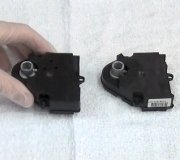I started checking the wiring out and this is where I am running into trouble. With the battery out, the ignition off, keys out, engine bay fuses oulled, and doors closed, I am seeing a few shorts to ground in the engine bay fuse box. The resistance between the fuses and ground is between 300 and 1500 ohms, and they are in the Interior Lamp fuse, the Audio fuse, and the Head Lamps fuse.
In the interior fuse panel I see similar shorts in fuses 6 (clock, anti-theft), 12 (Door locks), 14 (Power windows), 15 (Safety belt chime, gague cluster lighting), and 18 (Alternator warning light and EEC power relay coil).
I don't see any evidence of an accident, no pinched harnesses, no obviously burnt wiring. One headlamp socket was slightly melted around the ground wire on the lightbulb side.
Before I start tearing this thing completely apart to find a bad wire, I need to know if there are any common issues with the mustangs around this year, or if it is normal for these circuits to have some continuity with ground, or anything else to check.
One last thing, when I disconnect the main wiring harness in the driver's side wheel well through the firewall and a harness connector in the engine bay on the pass. Side, the shorts disappear in the engine bay fuse box, but, naturally, not the inside one.
I've got to sort out the electrical issues in this thing so I can drive it a couple of days and get all the other bugs worked out. I hate cars owned by teenagers and I HATE tracing wires.
So yeah, any particular wires/switched to check, etc etc whatever.
Wednesday, November 10th, 2010 AT 7:56 PM


